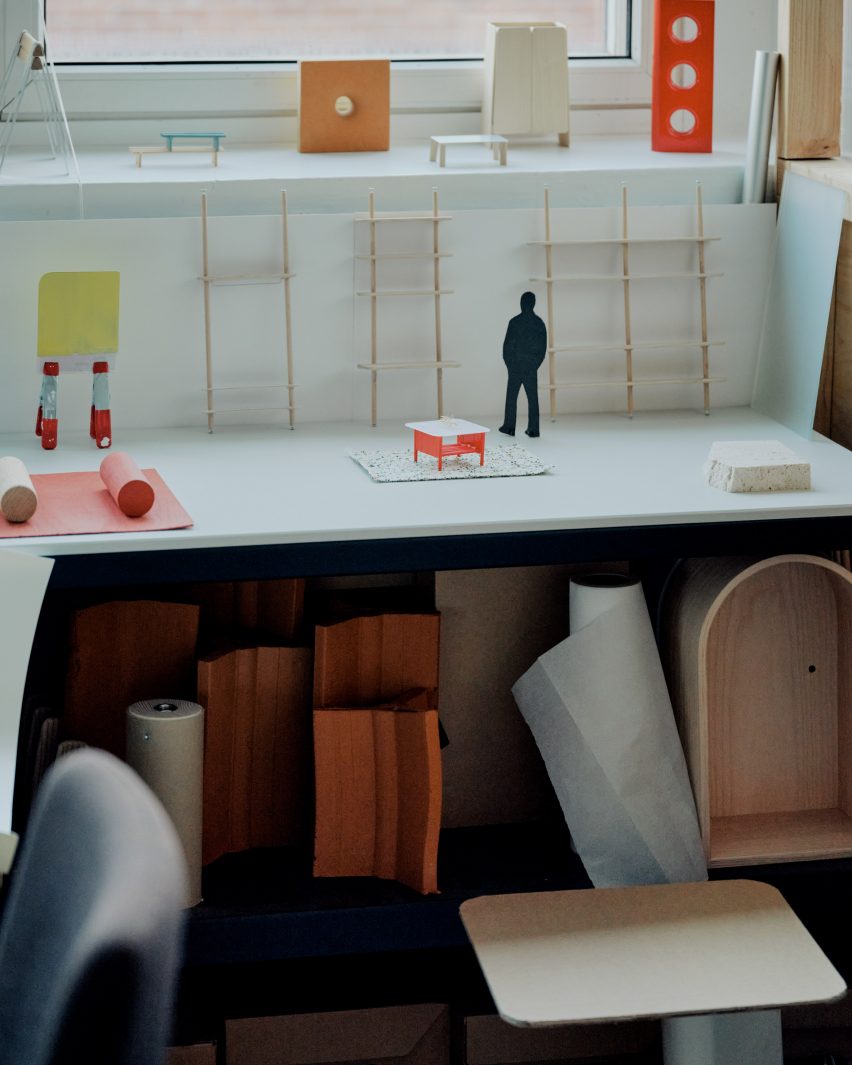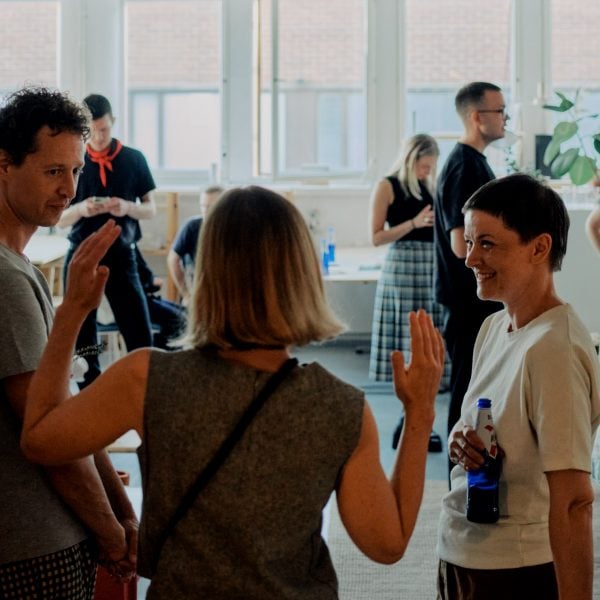Independent local designers are opening up their studios during Helsinki Design Week to demystify their creative processes, explains festival programme director Anni Korkman in this interview.
The 19th edition of Helsinki Design Week is underway. Taking place from 6 to 15 September, this year its theme is “Underneath” – a concept chosen to honour every part of the design process, not just the finished product.
Design process is “the magical part”
“This feels very topical, considering the circumstances that we’re all currently living in,” Korkman told Dezeen. “To highlight the design process and the difficulties it might involve.”
“But it’s also inspiring and interesting to see what these processes are actually like, especially when lots of design festivals only present the end result or just launch new things,” she continued.
“When you highlight the process and really educate yourself on how you develop ideas and manufacture things, that’s the magical part, and the most interesting bit, for sure.”
As part of the event’s Open Studios series, which began on Friday, independent designers are opening up their collaborative workplaces to offer the public a glimpse into their day-to-day activities.
“A micro-trend I’m noticing is that designers who may not necessarily have the training of a carpenter – or even do anything by hand or remotely related to craft – are moving towards that way of working where you have your studio, which is also a workshop and the workspace of a young community,” said Korkman.
For example, Studio Bom is a collective space in north-east Helsinki where creatives from a range of disciplines work together.
“They are designers from different fields, but in their new space, they can experiment with various forms of expression and creative work with their colleagues’ guidance,” explained Korkman.
“At Studio Bom, a graphic designer can try their hand at ceramics, and a furniture designer can discover new approaches through textile design,” she added.
Designers are “stirring up” conventions
Korkman also noted the many local hands-on practitioners working collaboratively, such as the members of Minestrone Workshop – a “contemporary wood workshop” in the city’s Vallila neighbourhood, established this year.
The space is home to founders Didi NG Wing Yin, Carlo Raymann, Paul Flanders, Hemmo Honkonen and Tatu Laakso – a group of emerging creatives testing the limits of timber and “stirring up sleepy design conventions”.
Another participating workspace is Veneentekijäntie 12, where 11 product and spacial designers including Aino Michelsen, Janne Pärssinen and Studio Kaksikko share ideas and other resources in a workspace on Lauttasaari island, to the west of the city centre.
“There are a number of these designer-maker spaces coming together where young designers work more collectively rather than just being at home with a laptop, which for me is very interesting, but also very rewarding,” considered Korkman.

“It’s having the ability to think past those silos,” she continued. “So often, designers can be in a little bubble and think in a certain way.”
“Now, you have designers from around Finland moving to Helsinki, or people like myself who studied abroad and are now moving back to Helsinki, finding these new ways of working together,” added the director. “For me, that feels meaningful.”
Korkman considered the legacy of traditional Finnish design – often created from local timber, and globally recognised for its clean lines and utilitarianism.
“When it comes to the use of wood or manufacturing furniture here in Finland, the market is still very small, so being mindful and resource-savvy is maybe something that comes naturally to a small nation like ours,” she said.
“Finland has used design to build its identity,” explained Korkman. “After the second world war, there wasn’t much, so we had to be very resourceful. Some of the most functional design cultural objects were born during that time in a way that was smart and savvy.”
While the director acknowledged the iconic status of traditional Finnish design, she highlighted the importance of collaboration and new ideas.
“We have our design heritage, and it’s very valuable, but we have a lot to learn from other countries and cultures as well, to create a more forward-looking approach.”
“As a small country, we have every opportunity to unite our strengths and reflect on the next chapters of the story of Finnish design from fresh, new perspectives,” added Korkman.
In 2025, Helsinki Design Week will celebrate its 20th anniversary, and complete the “trilogy” of themes that began with last year’s edition, which was titled Once Upon a Time.
“At the moment, we’re deep ‘underneath’, which feels exciting and fun, but also challenging,” said Korkman.

As the event approaches this milestone, she said that this year’s theme pays homage to the year-round activities run by the design week – including its weekly newsletter, podcast and smaller community events.
“We want to challenge this idea of festivals or events in general being something that’s just temporary, and then disappears,” she explained.
“We’re very hopeful looking towards next year’s anniversary,” she added. “This year definitely feels like a pre-party for something that will hopefully be more impactful and more international.”
“Some really, really nice things are happening in Helsinki at the moment, and we are proud to present them.”
The photography is by Justus Hirvi unless stated otherwise.
Helsinki Design Week 2024 takes place from 6 to 15 September 2024 at various locations across Helsinki, Finland. See Dezeen Events Guide for an up-to-date list of architecture and design events taking place around the world.
